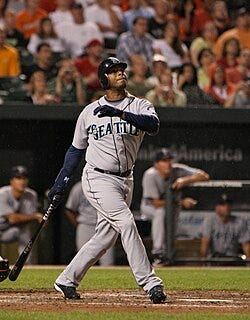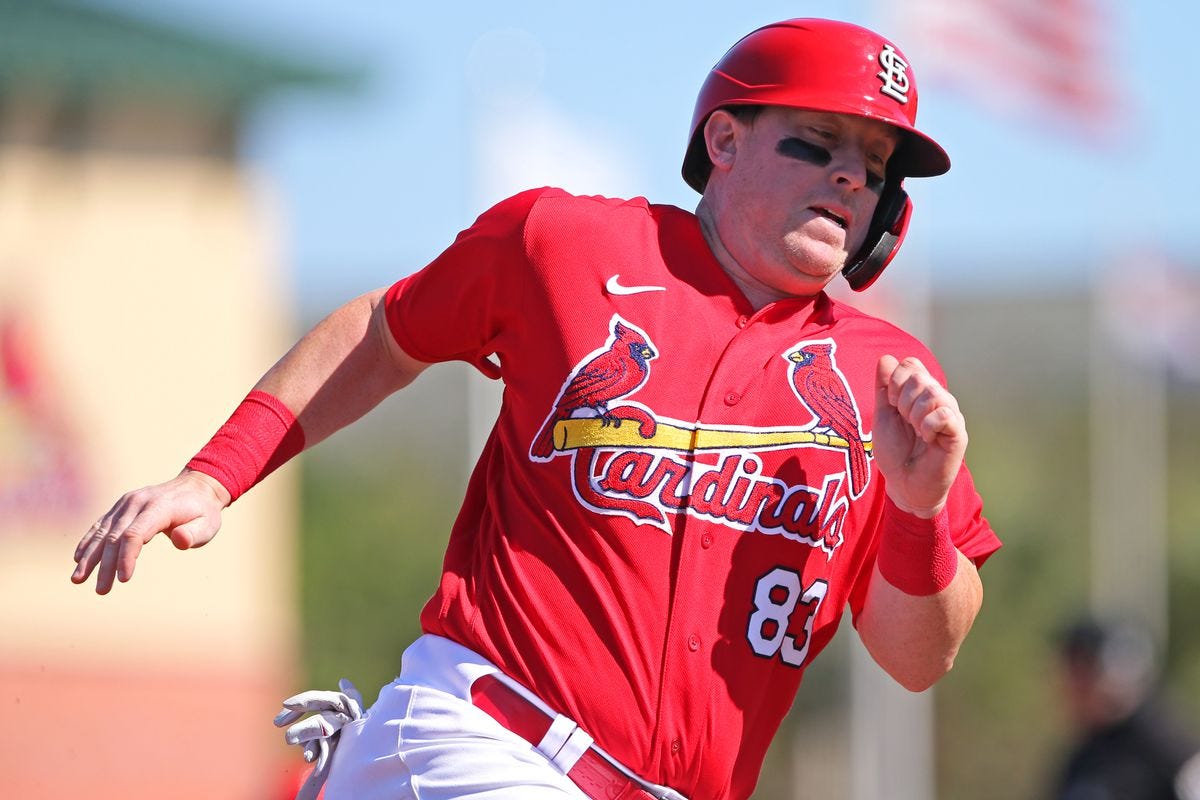The 2025 Major League Baseball Draft cranked up last night at 6 p.m. and unless you were a high school shortstop, you might as well have been watching America’s Funniest Home Videos.
Fifteen of the first 32 picks, 11 in the first round alone, were all shortstops! Really! Not a bunch of pitchers or centerfielders or first baseman or catchers. And most of them from high school! This is insane, isn’t it? If you are a first-rounder, that means $$$. And opportunities. And more opportunities.
John wasn’t drafted by the Cardinals, but that was the plan…
What kind of competition did they face? What sort of schedule were they dealt? You’re handing out millions to guys who haven’t even faced a pitcher who is getting paid to get outs? Why shortstops? “Because of their athleticism.” Oh.
Here’s the draft pick in the 34th round in 2014, the 1,032 selection, who made the show.
Having spent a dozen years watching these top draft choices in action, sometimes playing on the same team as my son, I will confess to you that using a Ouija board would probably get the same results with much less expense. Nobody knows nothin’ when you get right down to it.
It didn’t take a genius to look at a Chipper Jones or a Ken Griffey Jr. and say, “Gee, this guy is going to be good.” And a No. 1 overall choice OUGHT to be really good, right? But how many of these No. 1 overalls weren’t?
The truth is, there is no way to predict how the player, the draftee, will handle the incredible, mind-bending, relentless, often overwhelming rigors of trying playing professional baseball every damn day for a whole pro season. Add in travel, low pay, homesickness, selfish teammates, bored coaches, a generally disinterested fan base in most places and you have a recipe for disaster.
John played with countless guys who went ahead of him, some first-rounders and to watch them in action over the years, you wonder how the scouts could have been so off. And yesterday’s first round showed exactly what major-league teams think of the kind of coaching these guys are getting in college. Not much. That’s why they went for high schoolers so they could get them first.
So they’re risking millions of team dollars on high school players that, let’s face it, are about as unproven as can be, even if they’d played in some big tournaments. And from a player’s standpoint, you have a chance to get big money twice: When you sign and when/if you make the major leagues.
John went in the 34th round, the third day of the draft and, you’d have to say, given little chance to rise through the system. When he was promoted to Triple A Memphis after hitting over .300 and batting third in Double A Springfield for two seasons, the manager told him he didn’t really have a position and that he’d try to get him some at bats, DH’ing, etc. About five games in, he was hitting third and was in the majors a year later. Against all odds.
Because these draft picks are based on “projections,” it’s a guess. Just a guess. Starting in June of 1965, the MLB Draft has given scouting departments the opportunity to “project” who the next major leaguers will be. And if your weatherman had a track record like theirs, my guess is he’d be out of a job.

The first No. 1 overall pick was Rick Monday, who went on to a nice big league career but was probably best remembered for stomping a guy trying to burn an American flag. But Steve Chilcott? He was 1966’s top overall pick. Al Chambers? Danny Goodwin? Shawn Abner? Matt Bush? Brady Aiken? And while it’s true that many of the overall No. 1’s did make it to the majors, was that, at least in part, because they were the No. 1 overall and somebody didn’t want to make the scouts look bad?
Yeah, Tim Foli was a big-leaguer. So was Ron Blomberg, Mike Ivie, Dave Roberts, Bill Almon and Floyd Bannister. But these were all No. 1 overall picks, the very best player in the entire land. What does that say about the game? About this process? Were there players in the minor leagues who likely could have matched these guys’ MLB achievements if they got the chance? Wanna bet?
According to what I read, 23 of the 50 selections made after 2015 have made at least one All-Star Game, four were Rookies Of The Year (Bob Horner, Darryl Strawberry, Bryce Harper, Carlos Correa) and three No. 1 overalls are now in the Hall of Fame — Chipper Jones, Harold Baines and Joe Mauer. But shouldn’t there be more?
John’s draft day was insane. It was Day Three of the MLB Draft, he was a junior, could return to FSU. He heard from a few teams, got serious with the Cardinals who, after much negotiating, were going to meet his price. They were going to pick him. I even had a picture ready. Never heard a word from the Oakland A’s. Yet, as you’ll hear on the video, when the 34th round picks rolled around, Oakland picked him.
Had this photo ready for the 2014 MLB Draft. Had to wait.
Three years later, he did wind up with the Cardinals and made it to the majors with them. But no scout saw that coming, did they?
MLB saw the overwhelming public response to the NFL and NBA Drafts and wanted to get in on the action, get those ratings. But in those cases, we generally knew who they were drafting, having seen them in college. But had you heard of Kruz Schoolcraft before yesterday?
I’m happy for Jamie Arnold, the 11th pick — Mike Martin was smiling — to be a first-rounder. Going to the A’s. Been there. Good luck, buddy.
r






This was great. The draft has always felt like a weird mix of hope and guesswork, but this year’s shortstop spree took it to a new level. Made me think about how little we really know until guys actually grind through full seasons. Appreciate the reminder that sometimes it’s the 34th-rounders who write the better story.
From my very limited experience in baseball: the shortstop really IS the best athlete on the team.
But that's a crude metric when you have no other stats worth a damn. I would think that college players (at least from Division 1 teams) are a much better bet. They've faced really good opposition, at least.
As for minor league players: most of these drafted players are going to be sent to the minors anyway.